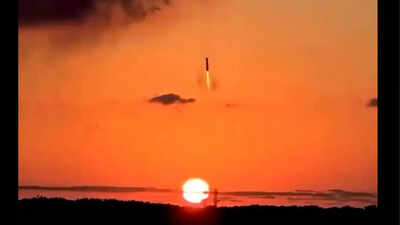On August 28, 2025, Spacex Achieved a Historic Milestone with Falcon 9 Booster B1067 Completing Its 30th Successful Flight and Landing. Launching from Nasa’s Kennedy Space Center, The Rockt Ascended Against a Dramaatic Sunset, Its Reflection Shimmering on Nearby Watters. This mission, starlink 10-11, deployed 28 satellites Into low Earth orbit, expanding space’s global broadband network. The booster then returned to the draoneship a shortfall of gravitas, marking a record in reusable Rockery. Once Considered Impossible By Experts, this reepeated use demonstrates how spacex is revolutionizing space travel, redeucing costs, and making frequent, routine launches increasing faasing.
Visual Spectacle of Spacex Falcon 9 meets technological achievement
The August 28 launch captivated audiences worldwide with its stunning visuals. As Falcon 9 Sored Against The Backdrop of a Setting Sun, The Reflection on the Surrounding Waters Created A Cinematic Effect, Making the launch appear almost otherworldly. Beyond Aesthetics, this mission underscores the rapid evolution of space technology. By successfully reasting boosting boosters multiple times, spacex reduces costs and environmental impact, while paving the wait for more frequent satellite representations, interplanetary messersions Initiatives. The combination of technical precision and breathting imagery reinforces bey spacex’s falcon 9 missions blur the line between sci-fi and reality.
30th Flight Milestone: A New Era in Reusable Rocket
Falcon 9 Booster B1067’s 30th Flight Represents a Breakthrough in Engineering and Sustainability. Prior to this, the feasibility of a booster flying and landing 30 times was met with skepticism. Spacex’s meticulous refurbishment process and design improvements have made this record a reality, proving the resilience and reliability of Reusable RocketsEach successful launch and landing not only saves millions in production costs but also accelerates the frequency of space missions. This Milestone Highlights Spacex’s Role in Demonstruating that Concept of Routinely Reasing Orbital-Class Rockets is no longer science fiction fiction but a tangible reality.



